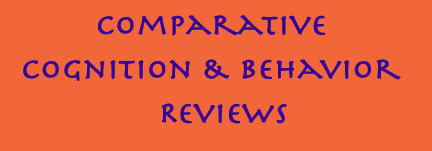| <<Vol. 2 Table of Contents | |
|
|
|
|
2007 |
Volume 2, p 155 |
In Memory of Eric Heinemann
Donald Blough
Brown University
|
|
|
Those of us in the animal cognition community were saddened to learn of the death of Eric Heinemann on July 9, 2006. Ericís eventful life included escape from the Netherlands during the Nazi era and service as a pilot in the British and the U.S. air services in World War II. After the war he studied with Wolfgang KŲhler at Swarthmore (BA, 1949) and continued his work in perception with James Gibson at Cornell (PhD, 1952). After stints at Harvard, Vassar, and the New School, Eric settled in 1963 as Professor of Psychology at Brooklyn College, CUNY. Eric was a pioneer in the quantitative analysis of human and animal discrimination, memory, and decision processes. He is best known for his work on brightness induction and, to students of animal cognition, for his exceptionally creative experiments and models of discrimination and pattern recognition, developed over the years in collaboration with Sheila Chase. Key theoretical papers concerned the pre-solution period in discrimination (1983a), memory storage and retrieval (1983b), and pattern recognition (1990). The modeling was always developed from and closely supported by data, a characteristic well illustrated by Ericís repeated contributions to the study of brightness induction, which were initiated by detailed data (1955) and led ultimately to a quantitative model of early vision, developed with Sheila Chase (1995), that supplemented their modeling of pattern recognition. Eric was often seen at meetings at the International Conference on Comparative Cognition (CO3) and the Society for the Quantitative Analysis of Behavior (SQAB), and he contributed regularly to publications flowing from such meetings; a number of his articles also appeared in Science and in other major journals. His death is a great loss not only to his family, friends, and colleagues but also to the fields that were enriched by his strikingly original work. References Heinemann, E. G. (1955). Simultaneous brightness induction as a function of inducing- and test-field luminances. Journal of Experimental Psychology, 50, 89-95. Heinemann, E. G. (1983a). The pre-solution period and the detection of statistical associations. In M. L. Commons, R. J. Herrnstein, & A. Wagner (Eds.), Quantitative analyses of behavior: Vol. 4. Discrimination processes (pp. 21-35). Cambridge, MA: Ballinger. Heinemann, E. G. (1983b). A memory model for decision processes in pigeons. In M. L. Commons, R. J. Herrnstein, & A. Wagner (Eds.), Quantitative analyses of behavior: Vol. 4. Discrimination processes (pp. 3-19). Cambridge, MA: Ballinger. Heinemann, E. G., & Chase, S. (1990). A quantitative model for pattern recognition. In M. L. Commons, R. J. Herrnstein, S. M. Kosslyn, & D. B. Mumford (Eds.), Quantitative analyses of behavior: Vol. 9. Computations and clinical approaches to pattern recognition and concept formation (pp. 109-125). Hillsdale, NJ: Erlbaum. Heinemann, E. G., & Chase, S. (1995). A quantitative model for simultaneous brightness induction. Vision Research, 35, 2007-2020. |
|
Correspondence concerning this article should be addressed to Donald Blough, Brown University, Department of Psychology, Box 1853, 89 Waterman Street, Providence, Rhode Island 02912. E-mail: Donald_Blough@Brown.edu. How to
reference this article: |
